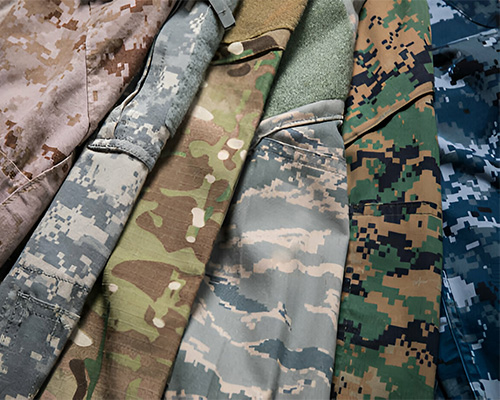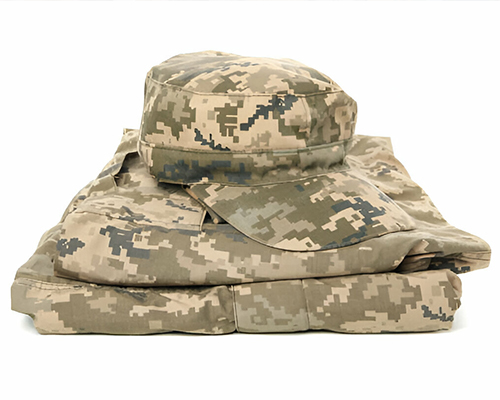Who Makes Military Uniforms: An Inside Look at the Industry
Military uniforms are more than just garments; they symbolize national pride, discipline, and the rigorous standards upheld by military personnel. But have you ever wondered who makes these uniforms? From fabric selection to final stitching, let’s explore the intricate process and the key players involved in producing military uniforms.
The Design Process: Where Function Meets Tradition
Designing a military uniform is a meticulous process that balances functionality, tradition, and modern technology. Military branches often have specific departments dedicated to uniform design. These departments work with textile experts and fashion designers to create uniforms that meet the stringent requirements of durability, comfort, and utility while maintaining a distinguished look.
Designers must consider various factors, including the climate where the uniform will be worn, the activities soldiers will engage in, and the need for camouflage or high visibility. Modern military uniforms often incorporate advanced materials that offer benefits like moisture-wicking, flame resistance, and enhanced mobility.

Major Players in Military Uniform Manufacturing
Several key players dominate the military uniform manufacturing industry, ranging from large corporations to specialized niche companies. Here are some notable manufacturers:
KMS: KMS is a premier provider of high-quality military apparel, dedicated to outfitting armed forces with the best in functionality, durability, and comfort. With a legacy of excellence and innovation, KMS has established itself as a trusted partner to military organizations around the world. ( Military Uniform Factory )
Propper International: One of the largest suppliers of military uniforms, Propper has been providing clothing for the U.S. military since 1967. They are known for producing everything from combat uniforms to tactical gear.
Crye Precision: Specializing in advanced tactical apparel, Crye Precision is renowned for its innovative designs and high-performance materials. Their uniforms are often used by special forces and elite units.
DRIFIRE: This company focuses on flame-resistant military uniforms. DRIFIRE’s products are designed to protect military personnel from the dangers of fire and heat while maintaining comfort and breathability.
Brookwood Companies: A major fabric supplier for military uniforms, Brookwood provides high-quality textiles that are used in various branches of the military. Their fabrics are engineered for durability and performance under extreme conditions.
The Role of Government Contracts
Manufacturing military uniforms is often a result of winning government contracts. These contracts are highly competitive and come with strict specifications and standards. Companies must meet rigorous quality control measures and ensure their products are made in accordance with the Berry Amendment, which mandates that military uniforms be produced in the United States.
The Defense Logistics Agency (DLA) plays a crucial role in procuring uniforms for the U.S. military. The DLA works with manufacturers to ensure that uniforms meet the necessary standards and are delivered on time.
The Production Process: From Fabric to Field
Fabric Production: The journey of a military uniform begins with fabric production. High-performance materials are chosen for their durability, comfort, and protective qualities. These fabrics are often treated with special coatings to enhance their performance.
Cutting and Sewing: Once the fabric is ready, it is cut into the various components of the uniform. Advanced machinery ensures precision in cutting, which is crucial for maintaining consistency and quality. Skilled workers then sew the pieces together, often incorporating features like reinforced stitching for added durability.
Quality Control: Quality control is a critical step in the production process. Uniforms undergo rigorous testing to ensure they meet military standards. Tests may include stress tests, durability assessments, and evaluations of features like waterproofing and fire resistance.
Distribution: After passing quality control, the uniforms are packaged and distributed to military bases around the world. Logistics teams ensure that uniforms arrive where they are needed, maintaining an inventory that can meet the demands of active military operations.

Innovation and the Future of Military Uniforms
The future of military uniforms lies in innovation. Research and development are continually advancing to create uniforms that offer even greater protection, comfort, and functionality. From smart textiles that can monitor a soldier’s vital signs to materials that provide enhanced ballistic protection, the evolution of military uniforms is an ongoing process.
Companies like Under Armour and 3M are exploring new technologies to integrate into military clothing, such as lightweight body armor and uniforms with embedded sensors. These advancements aim to enhance the safety and effectiveness of military personnel on the battlefield.
Conclusion
The making of military uniforms is a complex and highly specialized industry. It involves a collaborative effort between designers, manufacturers, and government agencies to ensure that military personnel are equipped with the best possible gear. From the drawing board to the front lines, each step in the process is driven by a commitment to quality, performance, and the unwavering support of those who serve.
Military uniforms not only serve as protective gear but also as a testament to the dedication and sacrifice of the men and women in uniform. As technology advances, the industry continues to innovate, striving to provide military personnel with the best possible equipment to perform their duties safely and effectively.
